THE ROUTE
Sydney to Brisbane January 5 through 14 2009
Brisbane to Thargomindah: January 15 to January 26 2009
Thargomindah to eyre Peninsula
January 27th through February 7th 2009
Port Lincoln (South Australia) to Geraldton (Western Australia)
February 8th through March 7th 2009
Geraldton to Broome (Western Australia)
March 10th to April 10th 2009
Cape Leveque and Gibb River Road
April 14th through April 28th 2009
Gibb River Road to Alice Springs
April 29th to May 15th 2009
Alice Springs to Brisbane
May 17th through June 17th 2009
COMING FULL CIRCLE
Greetings to all of you from Brisbane! We have completed our tour through Australia and have arrived back in Brisbane, where we began this journey in January. This is our final up-date from the Australia portion of our journey before we leave for Thailand.
From Alice Springs we headed north towards the Gulf of Carpentaria, hoping to find warmer weather again after crossing the Tropic of Capricorn. We passed the Devil's Marbles, a conglomerate of huge granite boulders
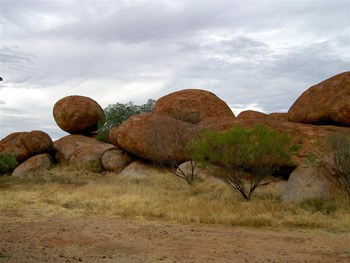
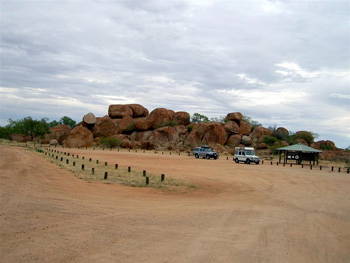
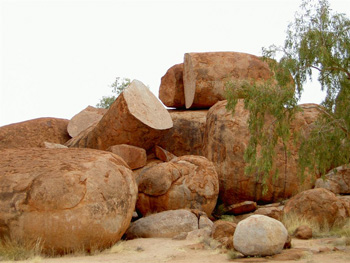
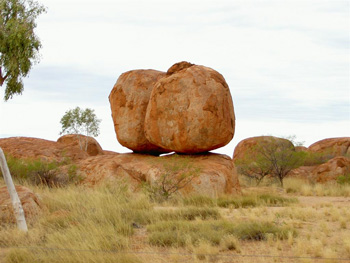
sitting in a flat, arid countryside covered with myriads of small pinnacle outcrops made by termites.
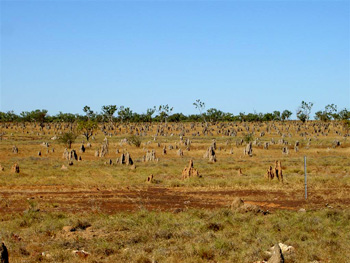
North of the Tropic of Capricorn we entered the tropical climate again with its crocodile infested rivers,
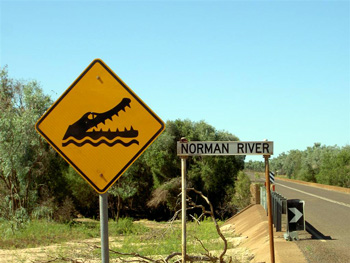
sultry weather, and sleepy towns. This area along the Gulf of Carpentaria with its colonial architecture feels like a cultural backwater where time stood still.
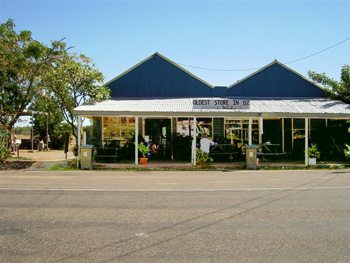
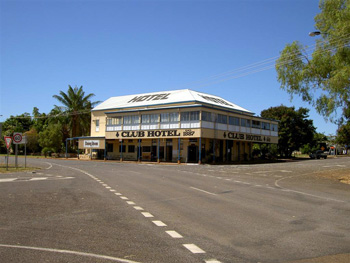
It is prime cattle country, and mobs of cattle are still pushed by drovers from one feeding ground to the next.
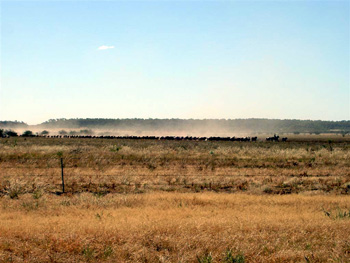
Roads are unfenced, and cattle move about freely.
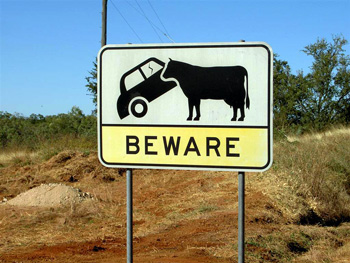

As elsewhere in Australia, this region is very concerned to preserve the local flora and fauna and to prevent the introduction and spread of weeds and insects from other parts of the continent. Therefore special quarantine stations are set up along the road to cleanse passing vehicles from unwanted soil and seeds. In Mount Surprise we took advantage of one such local quarantine procedure, and used the free car wash repeatedly, not only to rid the car of unwanted weeds but to rinse it from pockets of red clay, soil and dust collected during months of driving in the outback.
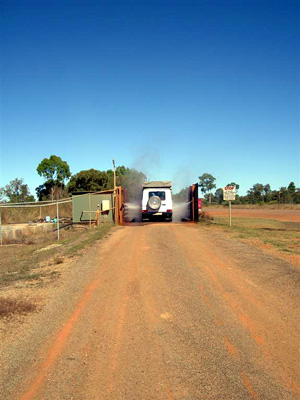
Our travel pace was now leisurely and we stopped frequently to visit local attractions along the way, like here the Undarra Volcanic Park on the southern end of the Atherton Tablelands. The area sits on an old volcanic site and is dotted with lava caves. For those wishing to sleep in comfort after a day of hiking through the caves, old railway cars have been converted into fashionable accommodation options.
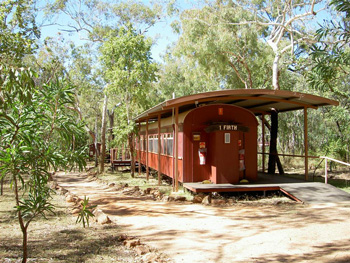
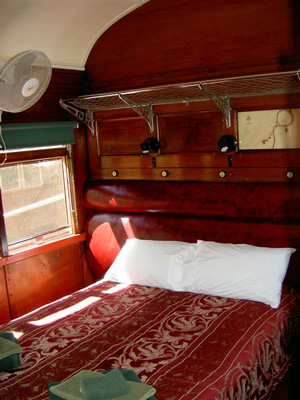
Closer to the coastline, fertile agricultural land touches the foot of the rainforest,
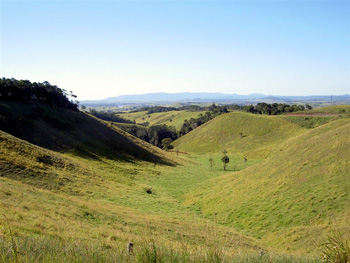
and the mountain range features many spectacular waterfalls, like Millstream Falls, the widest single drop falls in Australia.

We camped for a few cold and wet days near Lake Tinaroo situated on the northern end of the Atherton Tablelands. This area contains extensive rainforest
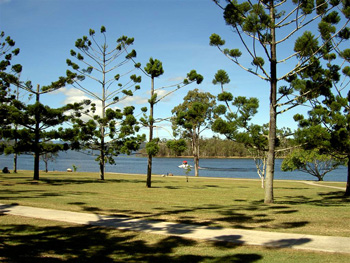
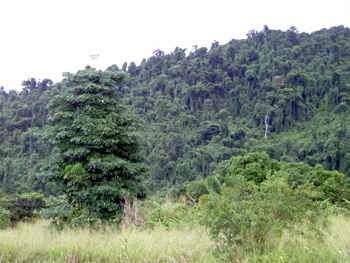
and is a prime spot for bird watching or just listening to the array of bird songs, sounds, cries, and shrieks. Lying in the roof top tent during a rainy day and listening to the birds was our favourite way of passing time until the sun re-appeared again.
The Wet Tropics really lived up their name and we encountered here the first rain after months in the dry and dusty outback of Western Australia. The sky was heavy with dark clouds
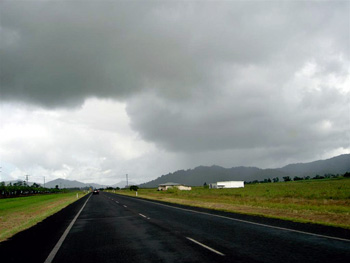
and occasional massive flooding is a threat big enough for local residents that they built their houses on high stilts to withstand the onslaught of water.

Temperatures lingered around 24°C and we shivered and felt cold all along the Cassowary Coast south of Cairns.
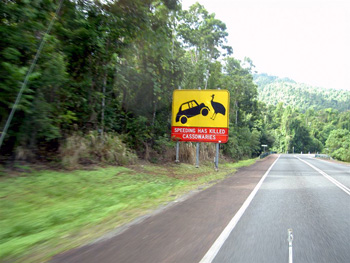
This stretch of coastline between Cairns and Mission Beach is a sanctuary for the endangered southern cassowary. The huge, flightless bird inhabits the rainforest particularly around Mission Beach, a funky township close to the Barrier Reef with palm-fringed beaches and a cold Pacific Ocean, into which only hardy Asian tourists ventured for swimming.
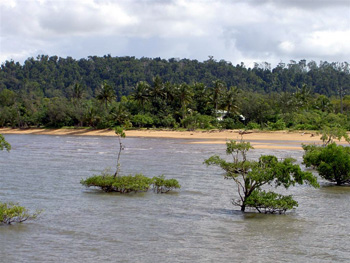
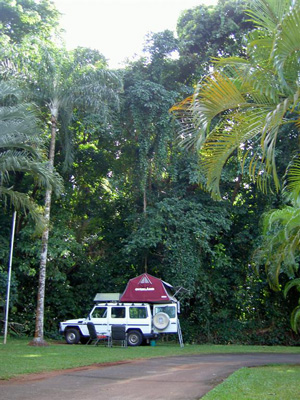
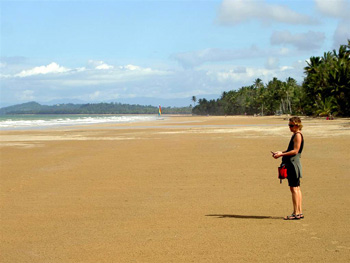
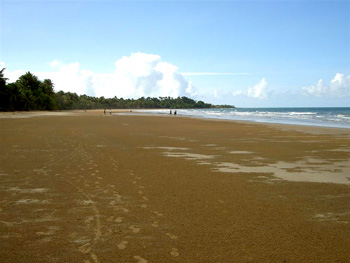
We wandered along the shore and watched tiny sand-crabs create ever changing pictures with the small marbles of sand they bring to the surface while excavating their underground hide-outs.
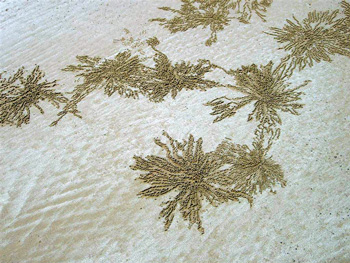
Continuing on our route to the south, we visited the Whitsunday Islands where the weather was fine, the views picturesque, the beaches crowded, and the roads congested. It felt to us a bit like the Cote d'Azur in France
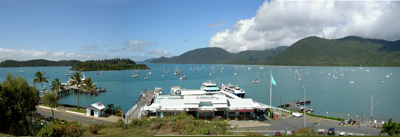
with its never-ending stretch of cafes along the ocean promenade in Airlie Beach. Here we rented for one night a cabin that was probably the best and most luxurious one we had on the entire trip.
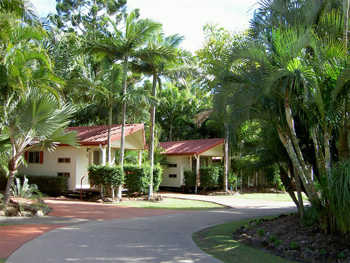
From Airlie Beach we drove straight to Brisbane, stopping in Rockhampton to get both rear tyres changed. They were punctured on the Canning Stock Route in May.
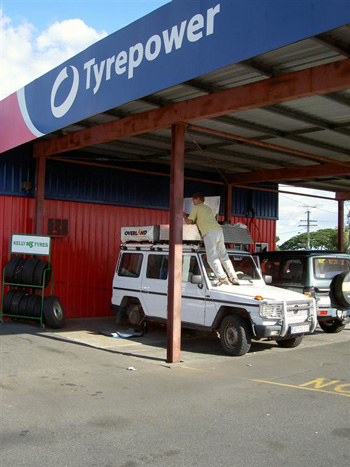
Back in Brisbane we started the inevitable process of throwing stuff away (worn out sleeping bags and cushions, ripped blankets, and the aluminum ladder we never used but drove around Australia for 6 months. We also gave away a bag filled with canned beans, soups, tomato sauce - our emergency rations for the hard times which we never encountered). Once the car was packed and ready to go, it was just a matter of waiting for a high-cube 40ft. container to be allocated to us. We cleared Customs ourselves again (as we did back in January when we imported our car into Australia) and then brought our GD 300 to the packing station at the Port of Brisbane where it was loaded and prepared for its voyage back to Hamburg.
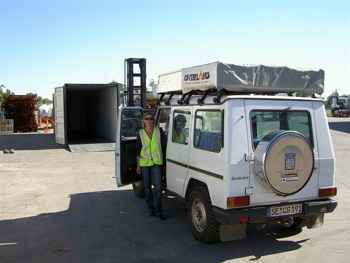

This journey has been an extraordinary experience for both of us, filled with impressions that will last a lifetime. We travelled for months through a spectacular array of uncompromising landscapes -- over bitumen, gravel, sand and rocks, along waterways, through rivers and across mountain ranges. Throughout this journey, from coast to coast, through deserts and the Outback, and the lonely, arid regions of the 'Back of Beyond' filled with silence, endless vistas, and star-filled nights it was always 'just-the-two-of-us'.
AUSTRALIA 2009
Total Trip mileage: 24,350 km
Daily mileage driven: from 3 km (Northern Territory) to 655 km (on the Nullabor Plain)
Days on the road: 86 days
Days rested: 77 days
Total fuel usage: 3370 Litres Diesel
Fuel prices: from AU$ 1.09 in Queensland to AU$ 3.25 per liter in Kunnawaritji Community, Western Australia.
Temperature range: 0°C in Great Sandy Desert to 45°C in Strzelecki Desert
AND NOW ON TO BANGKOK AND THAILAND!
February 8th through March 7th 2009
March 10th to April 10th 2009
April 14th through April 28th 2009
April 29th to May 15th 2009
May 17th through June 17th 2009
Total Trip mileage: 24,350 km
Daily mileage driven: from 3 km (Northern Territory) to 655 km (on the Nullabor Plain)
Days on the road: 86 days
Days rested: 77 days
Total fuel usage: 3370 Litres Diesel
Fuel prices: from AU$ 1.09 in Queensland to AU$ 3.25 per liter in Kunnawaritji Community, Western Australia.
Temperature range: 0°C in Great Sandy Desert to 45°C in Strzelecki Desert
AND NOW ON TO BANGKOK AND THAILAND!